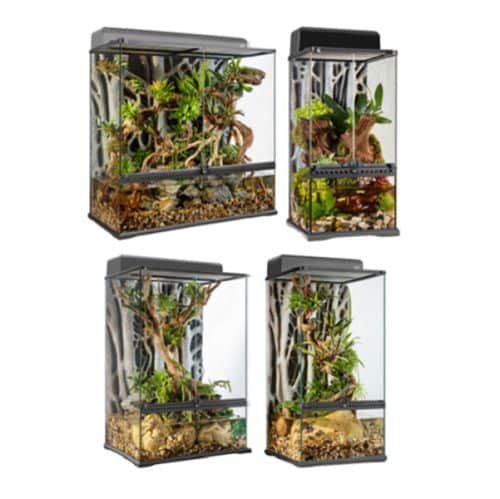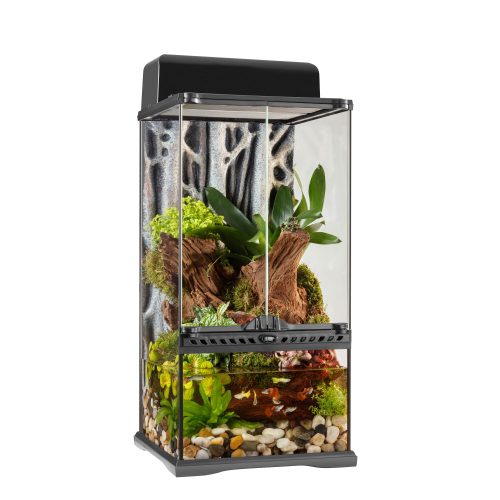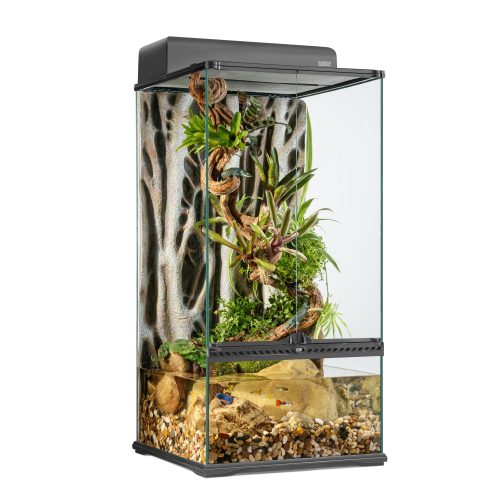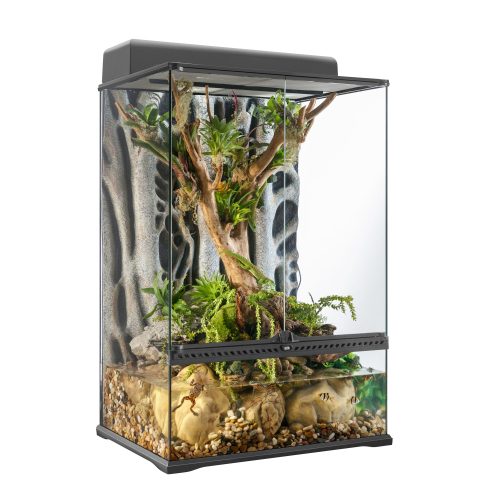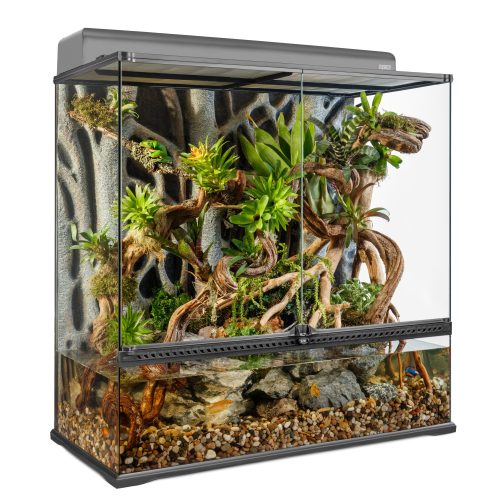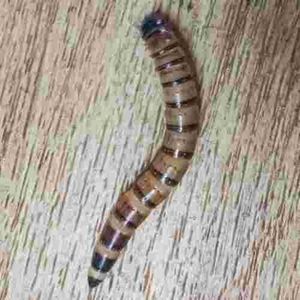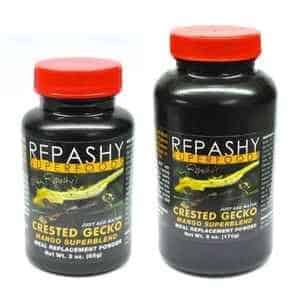ExoTerra Paludarium Natural Terrarium
Price range: £94.49 through £382.49
Description
Available in 4 sizes:
Mini Extra Tall – 30x30x60cm / Small Extra Tall – 45x45x90cm / Medium Extra Tall – 60x45x90cm / Large Extra Tall – 90x45x90cm
The word paludarium originates from the Latin word “palus” which stands for swamp. Paludariums are semi-aquatic terrarium habitats that replicate a rainforest, swamp or stream and can harbor aquatic as well as terrestrial animal and plant species. A paludarium combines the best of two worlds: an extra deep bottom allows you to incorporate a substantial water part or aquarium section adjacent to the land or terrarium section. A fully equipped and functioning paludarium is basically a small, closed ecosystem.
Water plays a vital role in the life of all animals. It is important for temperature regulation, nutrient uptake, waste removal, body weight and health. Additionally, many species require the presence of water during a short or longer period of time for certain stages in their life cycle like mating, egg laying, development (larval phase) or even shedding their skin. In the wild, events like seasonal flooding or heavy monsoon rains provide circumstances essential for their survival. If water is not available during a significant period of time, they will either perish or won’t be able to reproduce.
A paludarium is a unique, vivacious ecosystem capturing the essence of three distinct zones – the terrestrial, riparian, and aquatic – each reflecting a different slice of the natural world.
1. Terrestrial Zone: This zone mirrors the land portion of a tropical environment, brimming with a diverse range of invertebrates, reptiles, and amphibians. The area never submerges, featuring an array of plants, trees, bushes, and rocks, creating a playground for varied species.
2. Riparian Zone: The riparian zone, or the riverbank, is the transitional area between land and water, providing a haven for semi-aquatic reptiles and amphibians. Here, life thrives at the crossroads of two diverse habitats.
3. Aquatic Zone: The aquatic zone simulates a waterbody such as a stream, pond, or even a lake, offering a natural home to turtles, aquatic amphibians, fishes, and freshwater shrimps.
A fully functioning paludarium will provide a constant source of clean water, which is imperative to keep (semi-)aquatic species. The water part of the paludarium houses all the necessary aquatic equipment: filters, pumps and water heaters. A large part of the aquatic section can consist of a
false bottom supporting the land section. The false bottom can also accommodate and hide the aquatic appliances. Guide the water from the filter pump through your terrarium along a background with live plants and moss or by creating waterfalls that gradually drop the water back into to the water basin. Waterfalls add aesthetic appeal and will help oxygenate and biologically filter the water. Live plants and moss will contribute to the filtration capacities of your terrarium. This type of setup allows you to create an effective filtration system, mirroring the process of natural biological filtration. A fully equipped and functioning paludarium is a small, closed ecosystem. Use Biotize to speed up biological filtration capabilities and have your ecosystem ready immediately.
Perform regular water checks to verify the water quality and the effectiveness of your filter. Partial water changes can help to remove toxic substances or improve overall water quality. Unless really necessary, make sure to never perform entire water changes, as this will also remove beneficial bacteria and organisms.
Which animals thrive in a Paludarium?
Various types of reptiles, amphibians, fish, invertebrates and plants can be housed in a paludarium. Stream dwelling or semi-aquatic species like small turtles, basilisks, water dragons, anoles, newts, salamanders, frogs and small species of fish will thrive in the paludarium. Other
species that can be housed in a paludarium are mudskippers, crabs, shrimp and snails.
Additional information
| Size | Large, Medium, Mini, Small |
|---|---|
| Brands | Exo Terra |



